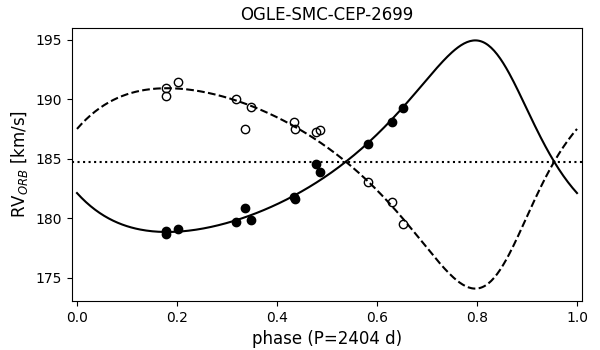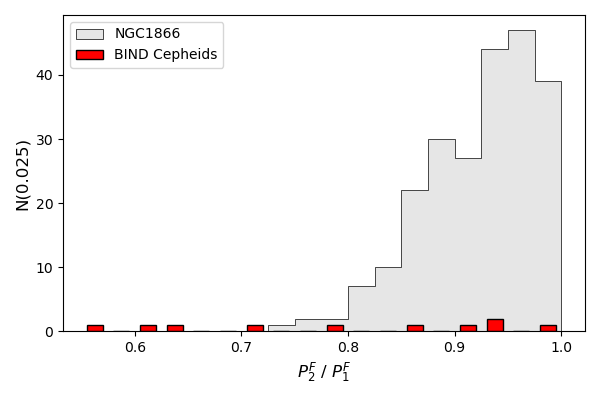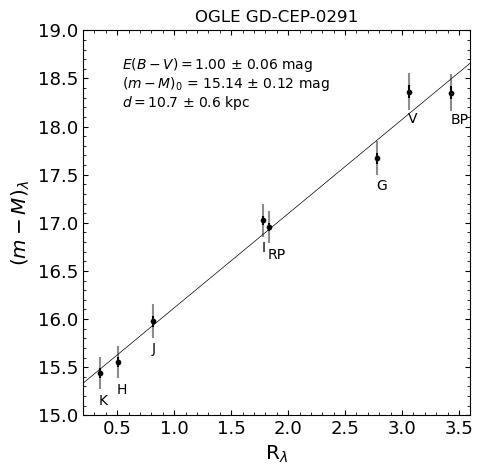 |
Catalogs
Cepheid Phys. Properties
Binary Cepheid Solutions
Projects
SB2 Cepheids
Classical Cepheids
Type II Cepheids
Papers
by category
by first author
by target
Visitors so far: 89372.

Relevant publication:
2024, A&A, 686, 263 (← click to see the publication at ADS/arXiv)
Binary Cepheids with giant companions are crucial for studying the physical properties of Cepheid variables, in particular providing the best means to measure their masses. Systems composed of two Cepheids are even more important, but to date, only one such system has been identified, in the Large Magellanic Cloud (LMC). Our current aim is to increase the number of these systems known tenfold and to provide their basic characteristics. The final goal is to obtain the physical properties of the component Cepheids, including their masses and radii, and to learn about their evolution in the multiple systems, also revealing their origin.
We started a spectroscopic monitoring campaign of nine unresolved pairs of Cepheids from the OGLE catalog to check if they are gravitationally bound. Two of these so-called double Cepheids are located in the LMC, five are in the Small Magellanic Cloud (SMC), and two are in the Milky Way (MW). We report a spectroscopic detection of the binarity of all nine of these double Cepheids with orbital periods ranging from 2 to 18 years. This increases the number of known binary double (BIND) Cepheids from 1 to 10 and triples the number of all confirmed double-lined binary (SB2) Cepheids. For five BIND Cepheids, the disentangled pulsational light curves of the components show anti- correlated phase shifts due to orbital motion.
We show the first empirical evidence that typical period–luminosity relations (PLRs) are rather binary Cepheid PLRs, as they include light of the companion. The statistics of pulsation period ratios of BIND Cepheids do not agree with those expected for pairs of Cepheids of the same age. These ratios together with the determined mass ratios far from unity suggest a merger origin of at least one component for about half of the systems.
 |
|---|
The SMC and MW objects are the first found in SB2 systems composed of giants in their host galaxies. The Milky Way BIND Cepheids are also the closest such systems, being located at about 11 and 26 kpc.
 |
|---|
Formulas for fundamentalization of first-overtone periods used in the paper:
(LMC) PF = P1O * (1.418 + 0.115 log P1O)
(SMC) PF = P1O * (1.433 + 0.096 log P1O)
We gratefully acknowledge financial support for this work from the Polish National Science Centre grant SONATA BIS 2020/38/E/ST9/00486.
